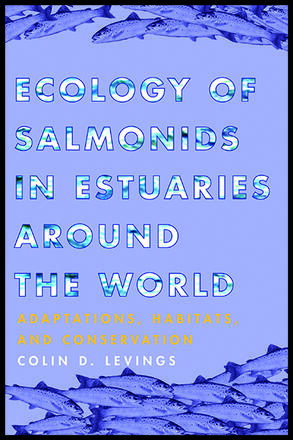
Ecology of Salmonids in Estuaries around the World
Adaptations, Habitats, and Conservation
A comprehensive guide to understanding the crucial role estuaries play in the salmonid life cycle and what can be done to conserve – and recover – this important fish habitat.
Description
Biologists have long marvelled at how anadromous salmonids – fish that pass from rivers into oceans and back – survive as they migrate between these two very different environments. Yet, relatively little is understood about what happens to salmonids in the estuaries where they make this transition from fresh to salt water. This book distills the current knowledge of how eighteen salmonid species around the world (including salmon, steelhead, char, and trout) are adapted to estuaries. It discusses why the waters where rivers and oceans meet are critical to salmonid survival and how these vital habitats can be preserved and recovered.
Reviews
Ecology of Salmonids in Estuaries around the World has been sorely needed to complement the syntheses on the freshwater and ocean ecology of salmonids. It is written for a diverse array of users, and I highly recommend it to graduate and undergraduate students, salmonid scientists and managers, citizen scientists (there is a primer in Appendix 3 written especially for this group), and conservationists.
- Kurt L. Fresh, National Marine Fisheries Service
… there is much to be learned about both fish ecology and physical oceanography/limnology from this book, which will interest many readers, even those without any specific affinity for salmonids … It is clear that Levings’s long career dedicated to researching estuarine biology contributes greatly to the detail contained within the book … potentially making it an important reference for early career salmonid researchers or others developing research agendas on the topic.
- Robert J. Lennox, Carleton University
The book seamlessly transitions from descriptions of the different types of estuaries, based on their morphological composition and specific attributes, to the behaviour of several salmonid species including their interactions with other species within estuarian environments … calling on a lifetime of estuarian studies, Levings details adaptations to field study techniques and strategies, and their limitations, employed in British Columbia and around the world.
- Bert Ionson
Colin Levings has distilled his vast knowledge from a lifetime of work on estuarine processes and salmonid ecology into a clear, concise and accessible book for a wide audience.
- Francis Juanes <i>et. al</i>
[Levings'] travels and consultation with colleagues enabled [him] to write a book that fills an important gap in the knowledge of estuarine ecology and suitability for the support of salmonid populations. Most large estuaries also serve as harbors for ship traffic and have huge human populations. These factors have affected the fishes to the point where many species have undergone drastic population decreases. This conservation problem is skillfully discussed by the author. In addition to its considerable scientific value, this handsome volume is well written and illustrated. It is a credit to the author and the University of British Columbia Press. Summing Up: Recommended
- J. C. Briggs, Oregon State University
I recommend that those studying estuaries consider purchasing this reasonably priced book. It provides a comprehensive review of what is known about salmonid estuaries, as well as recommendations for future work.
- Jim Irvine, Fisheries and Oceans Canada